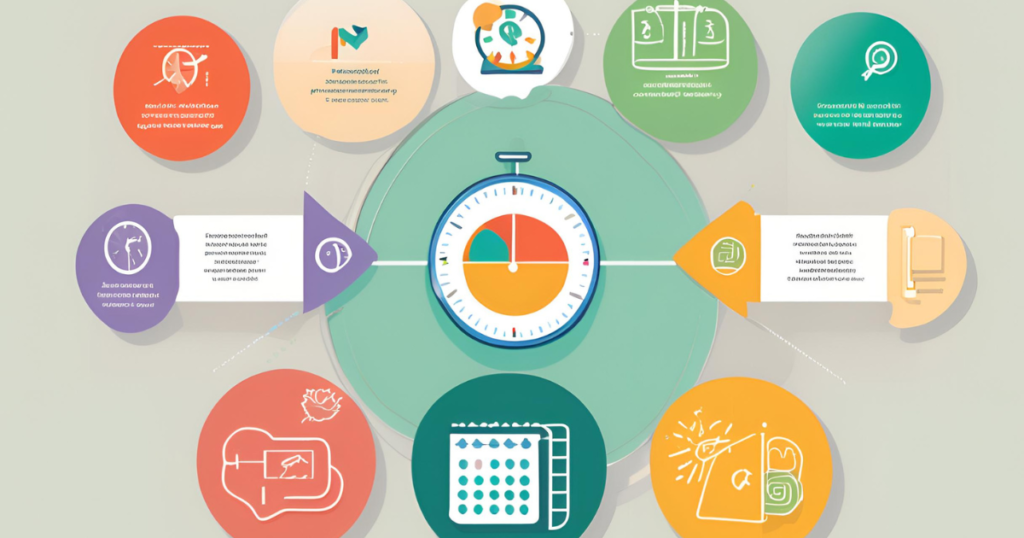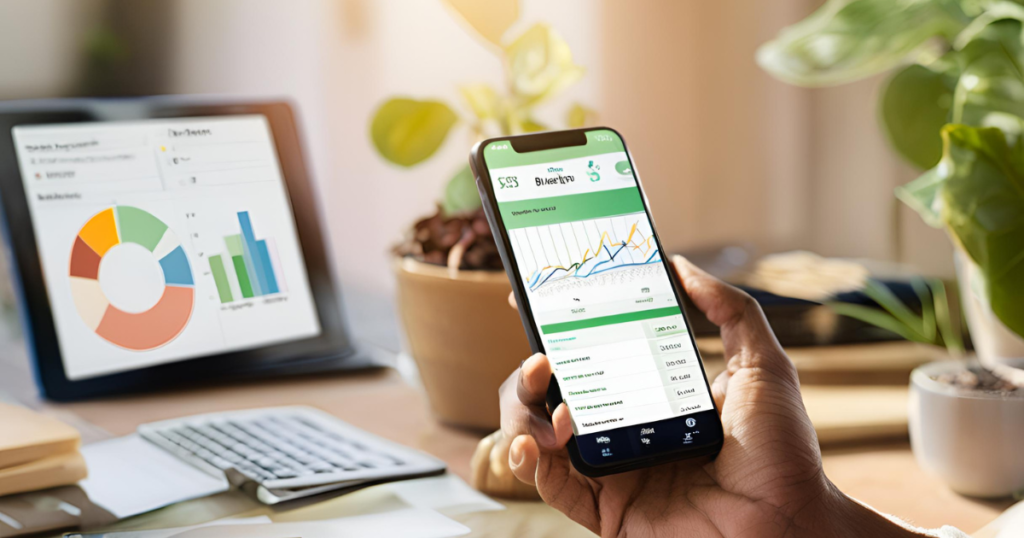How To Create a Personal Budget That Works
Creating a personal budget is like building a roadmap for your finances. It helps you understand where your money goes, ensures you’re living within your means, and empowers you to achieve your financial goals. Whether you’re looking to save for a dream vacation, pay off debt, or simply get a handle on your monthly expenses, a well-crafted budget is essential. In this article, we’ll guide you through the process of creating a personal budget that truly works for you.

- Why Budgeting is Important
- Assessing Your Financial Situation
- Setting Clear Financial Goals
- Tracking Your Income and Expenses
- Choosing a Budgeting Method
- Creating Your Personal Budget
- Sticking to Your Budget
- Adjusting Your Budget as Needed
- Using Technology to Simplify Budgeting
- Common Budgeting Mistakes to Avoid
- Conclusion
- FAQs
Why Budgeting is Important
Budgeting is more than just tracking your spending. It’s about taking control of your finances and making informed decisions about how to allocate your money. A budget can help you:
- Achieve Financial Goals: Whether you’re saving for a home, paying off student loans, or building an emergency fund, budgeting helps you prioritize and allocate resources effectively.
- Reduce Financial Stress: Knowing exactly where your money is going reduces anxiety and helps you avoid overspending or accumulating unnecessary debt.
- Improve Spending Habits: By understanding your spending patterns, you can identify areas where you may be overspending and make conscious changes to improve your financial habits.
Assessing Your Financial Situation
Before creating a budget, it’s important to assess your current financial situation. This involves understanding your income, expenses, assets, and liabilities. Here’s how to get started:

Determine Your Net Income
Your net income is the amount of money you take home after taxes and other deductions. If you’re a salaried employee, this is usually your monthly paycheck. If you’re self-employed or have variable income, calculate an average monthly income based on the past six months.
List Your Monthly Expenses
Identify your regular monthly expenses, such as rent or mortgage payments, utilities, groceries, transportation, insurance, and debt payments. Also, account for irregular expenses, like car maintenance or annual subscriptions, by averaging them into monthly amounts.
Evaluate Your Financial Health
Take a look at your assets (e.g., savings, investments, property) and liabilities (e.g., debts, loans). Calculate your net worth by subtracting your liabilities from your assets. This gives you a snapshot of your overall financial health and helps you set realistic goals.
Setting Clear Financial Goals
Setting clear and achievable financial goals is a crucial step in creating a budget that works. Goals provide direction and motivation to stick to your budget. Here’s how to set effective financial goals:
Short-term vs. Long-term Goals
- Short-term Goals: These are objectives you want to achieve within the next year, such as saving for a vacation, building an emergency fund, or paying off a small debt.
- Long-term Goals: These are objectives that require more time and planning, such as buying a house, saving for retirement, or funding your child’s education.
SMART Goals
Make your goals SMART: Specific, Measurable, Achievable, Relevant, and Time-bound. For example, instead of saying “I want to save money,” a SMART goal would be “I want to save $5,000 for a vacation by next June.”

Prioritize Your Goals
Identify which goals are most important to you and prioritize them in your budget. This ensures that your financial resources are aligned with your values and aspirations.
Tracking Your Income and Expenses
Accurate tracking of your income and expenses is the foundation of effective budgeting. It helps you understand your spending habits and identify areas for improvement. Here’s how to track your finances:
Use a Budgeting App
Budgeting apps like Mint, YNAB (You Need a Budget), or PocketGuard make it easy to track your income and expenses automatically. They categorize your spending, provide insights, and help you stay on top of your financial goals.
Maintain a Financial Journal
If you prefer a more hands-on approach, maintain a financial journal to record your income and expenses manually. Use a spreadsheet or a notebook to track your daily spending and categorize it accordingly.
Review Bank Statements
Regularly review your bank statements and credit card transactions to ensure that all expenses are accounted for. This helps you catch any discrepancies and adjust your budget as needed.
Choosing a Budgeting Method
There are several budgeting methods to choose from, each with its own advantages and disadvantages. Here are a few popular methods:
The 50/30/20 Rule
This simple budgeting method divides your income into three categories: 50% for needs (essentials like housing and groceries), 30% for wants (entertainment, dining out), and 20% for savings and debt repayment.
Zero-Based Budgeting
In a zero-based budget, every dollar you earn is assigned a specific purpose, leaving no money unaccounted for. This method requires detailed planning and ensures that your spending aligns with your goals.
Envelope System
The envelope system involves allocating cash for different spending categories, such as groceries, entertainment, and transportation. Once the cash in an envelope is spent, you cannot spend more in that category until the next budget period.

Percentage-Based Budgeting
In percentage-based budgeting, you allocate a certain percentage of your income to different categories, such as housing, transportation, savings, and leisure. This method is flexible and can be adjusted as your financial situation changes.
Creating Your Personal Budget
Once you’ve assessed your financial situation and chosen a budgeting method, it’s time to create your personal budget. Here are the steps to follow:
Step 1: List Your Income
Start by listing all sources of income, including your salary, side hustles, freelance work, and any other earnings. Calculate your total monthly income.
Step 2: Categorize Your Expenses
Divide your expenses into categories, such as housing, transportation, groceries, entertainment, savings, and debt repayment. Use your previous tracking data to estimate the average amount spent in each category.
Step 3: Set Spending Limits
Based on your chosen budgeting method, set spending limits for each category. Ensure that your total expenses do not exceed your net income. Adjust the limits as needed to prioritize your goals and needs.
Step 4: Review and Adjust
Review your budget regularly and adjust it as necessary. Life circumstances and financial priorities change over time, so it’s important to keep your budget flexible and adaptable.
Sticking to Your Budget
Creating a budget is just the first step; sticking to it is where the real challenge lies. Here are some tips to help you stay on track:
Create Accountability
Share your budgeting goals with a trusted friend or family member who can hold you accountable. Regular check-ins can help you stay motivated and committed to your financial plan.
Automate Savings
Set up automatic transfers to your savings account to ensure that you consistently save money each month. This “pay yourself first” approach prioritizes savings and reduces the temptation to spend impulsively.
Reward Yourself
Celebrate your budgeting successes by rewarding yourself for reaching milestones or sticking to your budget for a certain period. Choose rewards that don’t derail your financial goals, such as a small treat or a day out.
Adjusting Your Budget as Needed
Life is unpredictable, and your budget should be flexible enough to accommodate changes. Here’s how to adjust your budget when necessary:
Evaluate Changes in Income
If your income changes, adjust your budget to reflect the new amount. This ensures that you’re living within your means and can continue to meet your financial goals.
Reassess Priorities
As your goals and priorities change, reassess your budget to ensure it aligns with your current financial situation. Adjust spending limits and categories to reflect your evolving needs.
Account for Unexpected Expenses
Unexpected expenses, such as medical bills or car repairs, can disrupt your budget. Build an emergency fund to cover these costs and adjust your budget to replenish the fund as needed.
Using Technology to Simplify Budgeting
Technology can make budgeting more efficient and less time-consuming. Here are some tools and apps that can simplify the process:

Budgeting Apps
Apps like Mint, YNAB, and Empower offer features like automatic transaction tracking, budgeting templates, and financial insights to help you manage your money effectively.
Spreadsheets
If you prefer a more hands-on approach, create a budgeting spreadsheet using software like Excel or Google Sheets. Customize it to suit your needs and track your income and expenses manually.
Online Banking Tools
Many banks offer online banking tools that allow you to set up spending alerts, track transactions, and create budgets within their platforms. Take advantage of these features to monitor your finances more effectively.
Common Budgeting Mistakes to Avoid
Even with the best intentions, it’s easy to make mistakes when budgeting. Here are some common pitfalls to avoid:
Overcomplicating the Budget
Keep your budget simple and straightforward. Overcomplicating the process can lead to frustration and make it difficult to stick to your plan.
Failing to Account for Irregular Expenses
Don’t forget to account for irregular expenses, such as holiday gifts or annual subscriptions, in your budget. Spread these costs over the year to avoid surprises.
Setting Unrealistic Goals
Set realistic and achievable goals that reflect your current financial situation. Unrealistic goals can lead to disappointment and make it harder to stay motivated.
Ignoring Small Expenses
Small expenses can add up over time and derail your budget. Track even minor purchases to ensure that you’re staying within your spending limits.
Conclusion
Creating a personal budget that works is an empowering step towards financial independence and stability. By assessing your financial situation, setting clear goals, and choosing the right budgeting method, you can take control of your finances and work towards achieving your dreams. Remember to review your budget regularly, adjust it as needed, and stay committed to your financial journey. With the right tools and mindset, budgeting can become a valuable and rewarding part of your life.
FAQs
1. What is the best budgeting method for beginners?
The 50/30/20 rule is a great starting point for beginners. It’s simple, easy to follow, and helps you prioritize your spending and savings goals effectively.
2. How often should I review my budget?
Review your budget at least once a month to track your progress and make necessary adjustments. Regular reviews ensure that your budget stays aligned with your financial goals.
3. How can I reduce my monthly expenses?
To reduce monthly expenses, identify areas where you can cut back, such as dining out, subscriptions, or entertainment. Consider negotiating bills, shopping for discounts, and prioritizing needs over wants.
4. What should I do if I overspend one month?
If you overspend one month, review your budget to identify areas for adjustment. Cut back on non-essential expenses the following month to get back on track and consider revising spending limits if needed.
5. How can I make budgeting more enjoyable?
Make budgeting more enjoyable by setting rewards for achieving financial milestones, involving family members in the process, and using user-friendly apps or tools that simplify the task
